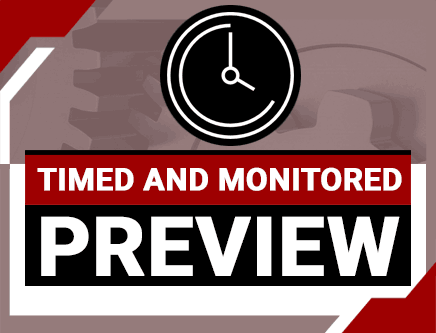Design of Monorail Systems (Ohio T&M)
Credit: 3 PDH
Subject Matter Expert: Tomas Orihuela, P.E.
In Design of Monorail Systems , you'll learn ...
- Loads to consider in monorail system design including dead load, trolley load, lifted load, collision forces, wind loads and forces due to skewing
- Calculation of load factors, including dead load factor and hoist load factor
- CMAA allowable stress equations
- Interaction equations for members subject to combined axial and bending stresses
Overview

To meet the Ohio Board's intent that online courses be "paced" by the provider, a timer will be used to record your study time. You will be unable to access the quiz until the required study time of 150 minutes has been met.
Credit: 3 PDH
Length: 21 pages
This course provides guidance for the design of a monorail beam system. The design concept presented is for a manually-driven trolley hoist on a single beam or girder based primarily on the Crane Manufacturers Association of America (CMAA) Specification No. 74. Deflection limitations, fatigue, and operational safety will also be discussed. Two case studies are presented to show the effectiveness of a well-planned overhead material handling system.
When this course has been completed, the reader will be familiar with the basic design of a single girder monorail system for bottom-running manual trolley hoists.
Specific Knowledge or Skill Obtained
This course teaches the following specific knowledge and skills:
- The benefits of monorails relative to manual lifting, including increased productivity and reduction of injuries
- Information to provide on engineering drawings to improve operational safety
- The components of a safety plan for the operation of monorails
- Checklist of design criteria needed in the early stages of a monorail system design
- Monorail classification systems for frequency of service, load classes and load cycles
- Proper clearances, support location criteria, design of connections, deflection limitations and common structural shapes
- Loads to consider in monorail system design including dead load, trolley load, lifted load, collision forces, wind loads and forces due to skewing
- Calculation of load factors, including dead load factor and hoist load factor
- CMAA allowable stress equations
- Interaction equations for members subject to combined axial and bending stresses
Note regarding Codes and Standards: Some of the codes and standards that were used in the development of this course have been superseded by later revisions. It is not the purpose of this course to provide an evergreen design manual for the design of monorail systems. The intent is to educate the engineer on the general concept and methodology of monorail design. The reader should review the latest edition of all applicable codes and standards and retain the services of an experienced, registered professional engineer before attempting to apply any content in this course to a particular task, application or project.
Certificate of Completion
You will be able to immediately print a certificate of completion after passing a multiple-choice quiz consisting of 20 questions. PDH credits are not awarded until the course is completed and quiz is passed.
| This course is applicable to professional engineers in: | ||
| Alabama (P.E.) | Alaska (P.E.) | Arkansas (P.E.) |
| Delaware (P.E.) | District of Columbia (P.E.) | Florida (P.E. Area of Practice) |
| Georgia (P.E.) | Idaho (P.E.) | Illinois (S.E.) |
| Indiana (P.E.) | Iowa (P.E.) | Kansas (P.E.) |
| Kentucky (P.E.) | Louisiana (P.E.) | Maine (P.E.) |
| Maryland (P.E.) | Michigan (P.E.) | Minnesota (P.E.) |
| Mississippi (P.E.) | Missouri (P.E.) | Montana (P.E.) |
| Nebraska (P.E.) | Nevada (P.E.) | New Hampshire (P.E.) |
| New Jersey (P.E.) | New Mexico (P.E.) | New York (P.E.) |
| North Carolina (P.E.) | North Dakota (P.E.) | Ohio (P.E. Self-Paced) |
| Ohio (P.E. Timed & Monitored) | Oklahoma (P.E.) | Oregon (P.E.) |
| Pennsylvania (P.E.) | South Carolina (P.E.) | South Dakota (P.E.) |
| Tennessee (P.E.) | Texas (P.E.) | Utah (P.E.) |
| Vermont (P.E.) | Virginia (P.E.) | West Virginia (P.E.) |
| Wisconsin (P.E.) | Wyoming (P.E.) | |


 Live support chat
Live support chat



